Understanding basic electronic components and their functions is crucial for both enthusiasts and professionals. The diode, with its role in controlling current flow in a circuit, is a fundamental component. Central to its operation are two terminals: the anode and the cathode.
A common confusion, especially for newcomers, is whether the cathode is positive or negative. This question is key to understanding diode functionality and the principles of semiconductor physics. Specifically, there is often uncertainty regarding whether the cathode is positive or negative in a diode.
This question not only delves into the core functionality of diodes but also highlights essential principles of semiconductor physics. By clarifying the nature of the cathode in a diode, one can better grasp how diodes contribute to the broader functionality of electronic systems.
What Is A Diode?
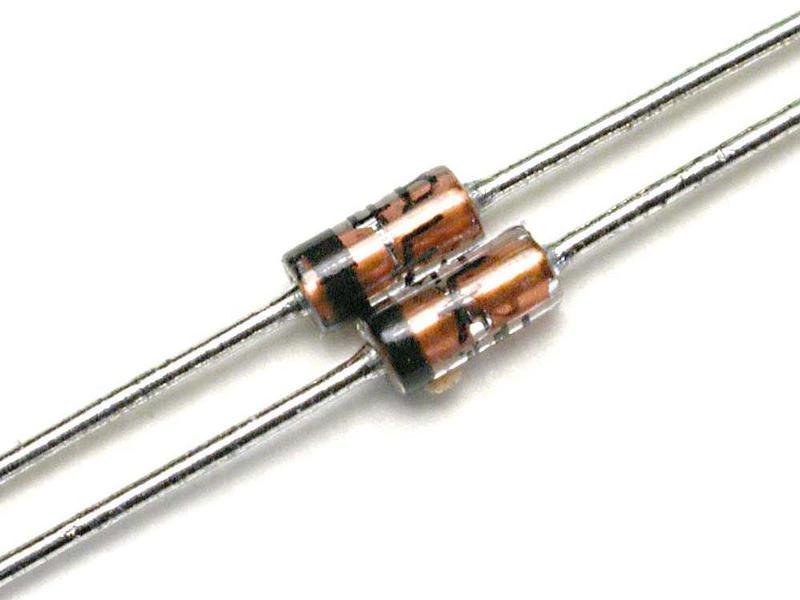
A diode functions like a one-way street for electric current. As a semiconductor device, it has two terminals: the anode and the cathode. You will find it made from p-type (positive terminal) and n-type (negative terminal) silicon, allowing current to flow in only one direction—from the anode to the cathode.
This unique characteristic makes diodes essential for many everyday electronics, including LED (Light-Emitting Diode) lights and modern integrated circuits. Moreover, diodes aren’t limited to silicon; they can also be made from germanium or even gallium arsenide, a material reminiscent of space-age technology.
Among the many types of diodes, the Light Emitting Diode (LED) stands out as the most well-known. However, diodes vary widely, from Zener diodes to Schottky diodes, the latter named after physicist Walter H. Schottky. Now, let’s delve into the core components: the anode and cathode.
What Is The Structure Of A Diode?
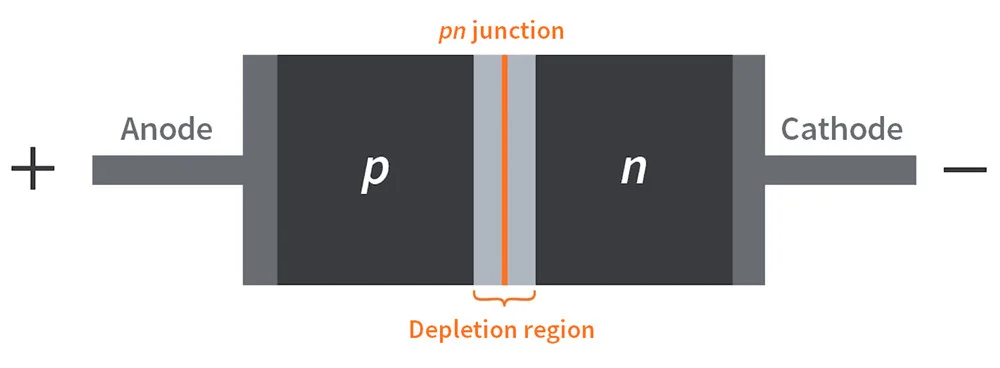
The structure of a diode revolves around its core components and how they interact to control current flow. Here’s a detailed breakdown:
P-Type Region: Start with the p-type region, which you’ll find doped with impurities that create an abundance of holes, or positive charge carriers. This region forms the anode of the diode.
N-Type Region: Next, the n-type region is doped with impurities that provide an excess of electrons, or negative charge carriers. This region forms the cathode of the diode.
Junction: Where these two regions meet, you have the p-n junction. At this critical boundary, electrons from the n-type region combine with holes from the p-type region. This interaction creates a depletion zone, acting as an insulator that prevents current flow until you apply a certain threshold voltage.
Terminals: A diode has two terminals: the anode, connected to the p-type region, and the cathode, connected to the n-type region. These terminals allow you to connect the diode to an external circuit.
Package: The semiconductor material, along with its junction, is encapsulated in a protective casing. This casing often has leads or pins extending from the anode and cathode, making it easy for you to connect the diode to a circuit.
When you apply a forward voltage (positive to the anode and negative to the cathode), the depletion zone narrows, allowing current to flow. Conversely, when you apply a reverse voltage, the depletion zone widens, blocking current flow. This behavior underpins the diode’s essential function of one-way current control.
What Is The Anode And Cathode In A Diode?
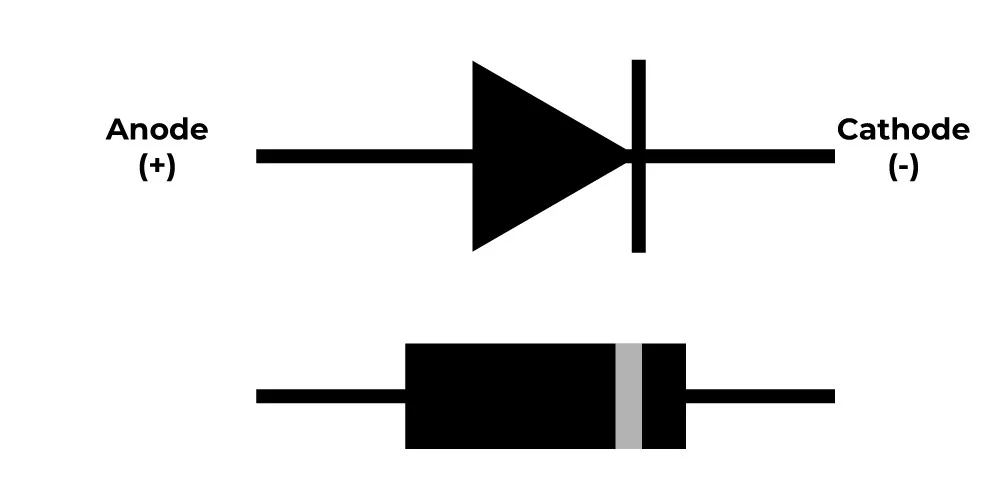
A diode has two crucial components: the anode and the cathode. Understanding these is essential for working with diodes effectively.
Anode Is Positive Or Negative In The Diode
Firstly, the anode is the positive terminal of the diode. When you connect the anode to the positive side of your power supply, you’re setting up the diode to allow current to flow. Think of the anode as the entrance for the current, where it begins its journey through the diode.
Is Cathode Positive Or negative In Diode
On the other hand, you have the cathode, which is the negative terminal. This is where the current exits the diode. When you connect the cathode to the negative side of your power supply, you complete the circuit, enabling the current to flow from the anode to the cathode.
So, to put it simply:
The anode is the positive terminal where the current enters. The cathode is the negative terminal where the current exits. By understanding the roles of the anode and cathode, you can confidently work with diodes in various electronic applications, ensuring that the current flows exactly where you need it.
What Is The Functionality Of Anode And Cathode In A Diode?
Let’s talk about functionality. The anode and cathode of a diode have distinct roles that are crucial for its operation. The anode injects positive charges into the semiconductor, attracting negative charges and mobilizing current across the diode. Meanwhile, the cathode emits negative charge carriers (electrons), allowing the current to pass. It’s like a delicate dance of charges, with both partners working together in perfect harmony.
When you connect the anode to a higher voltage than the cathode, the diode becomes forward-biased, allowing current to flow. However, if you reverse the voltage, the diode enters a reverse-biased condition, shutting off the current like a traffic cop stopping traffic. Understanding these roles and conditions helps you effectively use diodes in your circuits.
How Do P-type And N-type Semiconductors Work?
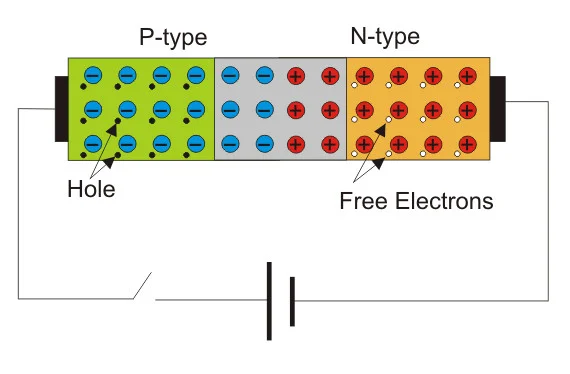
Ever wonder how p-type and n-type semiconductors work together? Let’s break it down. The main players are p-type and n-type materials. You create p-type material by adding elements like boron, which have only three valence electrons. This process introduces “holes” in the semiconductor, acting as positive charge carriers.
On the other hand, n-type material is made by adding elements like arsenic, which has five valence electrons. This results in a surplus of negative charge carriers, or free electrons.
When you combine these two materials, they form a p-n junction, which is the heart of a diode. This junction enables the dynamic interaction of positive and negative charges, making the diode function effectively.
The p-type and n-type regions work together to control the flow of current, ensuring the diode only allows current to pass in one direction. This interaction is crucial for the diode’s role in rectifying current, protecting circuits, and emitting light in LEDs. By understanding how these materials interact, you gain a deeper insight into the fundamental operations of various semiconductor devices.
The Influence Of Anode And Cathode In Diode Current
Let’s do a quick recap. The diode allows current to flow when the voltage increases at the anode and decreases at the cathode. But what happens next depends on the type of diode you’re using.
For example, consider a Zener diode, named after physicist Clarence Melvin Zener. This diode can handle reverse bias up to a specific point called the breakdown voltage. At this critical point, it undergoes a controlled breakdown, acting like a pressure relief valve and allowing current to flow in the opposite direction. Pretty cool, right?
In contrast, LEDs operate using a phenomenon called electroluminescence. In this process, they emit light as electrons and holes recombine. It’s a remarkable feat of engineering, effectively transforming electrical energy into light. Simply amazing!
Understanding these different behaviors and applications of diodes allows you to harness their potential in various electronic circuits and devices. Whether it’s regulating voltage, protecting circuits, or emitting light, diodes play a crucial role in modern electronics.
How To Identify The Anode And Cathode In A Diode?
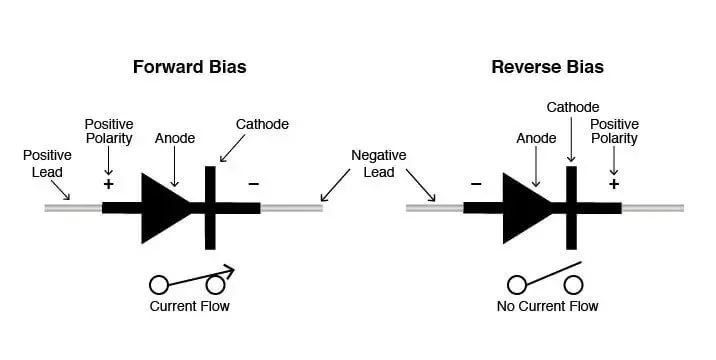
Let’s explore some nifty ways to identify your anode and cathode. Diodes often have markings or physical characteristics to help you distinguish between the two terminals. For example, you might notice a silver or white stripe on the cathode side, or a distinct “K” (indicating “cathode”).
In addition, some diodes feature a schematic symbol etched onto the package, depicting the direction of the arrow to ensure you know which way the electric current flows.
When in doubt, always refer to the datasheet that comes with the diode. It serves as a trusty guide, packed with valuable information to assist you in your endeavors!
The Applications Of Anode And Cathode Of Diode
Understanding the applications of the anode and cathode in a diode will greatly enhance your ability to utilize these components in various electronic projects. Let’s delve into some common applications and how the roles of the anode and cathode come into play.
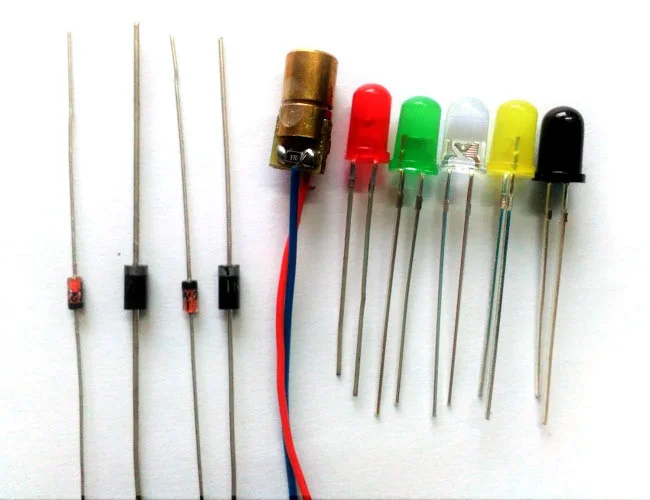
Rectification
When you use a diode in a rectifier circuit, it converts alternating current (AC) to direct current (DC). By connecting the anode to the AC source’s positive half-cycle and the cathode to the negative half-cycle, the diode allows current to pass during the positive cycle and blocks it during the negative cycle. This process effectively converts the AC into a pulsed DC.
Protection
Diodes serve as protection devices in circuits. When you place a diode across a sensitive component, with the anode connected to the ground and the cathode to the power line, it protects against reverse voltage. If a reverse voltage spike occurs, the diode conducts and shunts the harmful voltage away from the sensitive component, thereby preventing damage.
Signal Demodulation
You can use diodes for signal demodulation. In radio receivers, for example, a diode helps extract the audio signal from the modulated radio frequency signal. By connecting the anode to the signal input and the cathode to the output, the diode rectifies the high-frequency signal, leaving the lower-frequency audio signal.
LED Lighting
Light-emitting diodes (LEDs) are diodes that emit light when current flows from the anode to the cathode. By ensuring the correct polarity, with the anode connected to the positive side of your power source and the cathode to the negative side, LEDs efficiently convert electrical energy into light.
Voltage Regulation
Diodes function as voltage regulators in Zener diode configurations. When you use a Zener diode, you connect the anode to a voltage reference and the cathode to the load. In reverse bias, the Zener diode maintains a stable output voltage despite variations in the input voltage or load conditions, providing a steady voltage supply.
Conclusion
In conclusion, the cathode in a diode is the negative terminal, while the anode is the positive terminal. This polarity is crucial for the diode’s operation and its various applications in electronic circuits. Understanding the roles of the anode and cathode allows for the effective use of diodes in converting AC to DC, protecting components from reverse voltage, signal demodulation, LED lighting, and voltage regulation.
Recognizing the anode as positive and the cathode as negative enables efficient circuit design, leading to robust and reliable electronic systems. Thus, this distinction is a cornerstone of practical electronics.